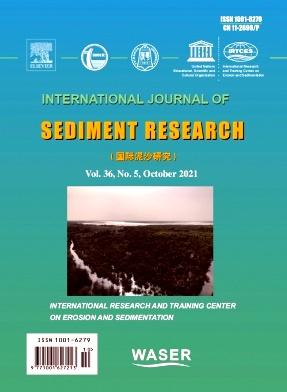Changes in runoff and sediment discharge along with their driving factors in the Pearl River basin from 1961 to 2018
Abstract
The Pearl River is the second-largest river in China in terms of discharge and has experienced significant changes due to human activities and climate change. The aim of the current study was to detect spatiotemporal variations in runoff and sediment discharge in the Pearl River basin (PRB) over the past 60 years and to reveal the driving factors based on the collection of hydrological and meteorological data and land use data. The results showed that the average sediment load in the PRB was 64.7 Mt/y, with a significant decreasing rate of −7.6 Mt/10 y. The increase in vegetation coverage (by 0.4%/10 y) and the presence of large reservoirs were the main factors leading to the decreasing trend in the sediment load. However, in some subbasins with limited reservoir construction, increased rainfall erosivity during the dry season, along with land use conversion leading to a rapid increase in bare land and construction sites, contributed to an upward trend in the sediment load. The runoff discharge in the PRB remained relatively stable, with a change rate of −2.3 km3/10 y, and its variations were closely related to annual and seasonal rainfall changes. Human water consumption resulted in a lower measured runoff than natural runoff levels. A significant linear relation between the two confirmed the impact of human activities. The current study emphasizes the importance of considering both natural and anthropogenic factors in understanding runoff and sediment dynamics in the PRB and contributes to the knowledge of basin hydrology for guiding the formulation of effective water management strategies for sustainable regional development.

 求助内容:
求助内容: 应助结果提醒方式:
应助结果提醒方式:


